- Home
- Jules Verne
Voyage au centre de la terre. English Page 14
Voyage au centre de la terre. English Read online
Page 14
CHAPTER XI.
A GUIDE FOUND TO THE CENTRE OF THE EARTH
In the evening I took a short walk on the beach and returned at nightto my plank-bed, where I slept soundly all night.
When I awoke I heard my uncle talking at a great rate in the nextroom. I immediately dressed and joined him.
He was conversing in the Danish language with a tall man, of robustbuild. This fine fellow must have been possessed of great strength.His eyes, set in a large and ingenuous face, seemed to me veryintelligent; they were of a dreamy sea-blue. Long hair, which wouldhave been called red even in England, fell in long meshes upon hisbroad shoulders. The movements of this native were lithe and supple;but he made little use of his arms in speaking, like a man who knewnothing or cared nothing about the language of gestures. His wholeappearance bespoke perfect calmness and self-possession, notindolence but tranquillity. It was felt at once that he would bebeholden to nobody, that he worked for his own convenience, and thatnothing in this world could astonish or disturb his philosophiccalmness.
I caught the shades of this Icelander's character by the way in whichhe listened to the impassioned flow of words which fell from theProfessor. He stood with arms crossed, perfectly unmoved by myuncle's incessant gesticulations. A negative was expressed by a slowmovement of the head from left to right, an affirmative by a slightbend, so slight that his long hair scarcely moved. He carried economyof motion even to parsimony.
Certainly I should never have dreamt in looking at this man that hewas a hunter; he did not look likely to frighten his game, nor did heseem as if he would even get near it. But the mystery was explainedwhen M. Fridrikssen informed me that this tranquil personage was onlya hunter of the eider duck, whose under plumage constitutes the chiefwealth of the island. This is the celebrated eider down, and itrequires no great rapidity of movement to get it.
Early in summer the female, a very pretty bird, goes to build hernest among the rocks of the fiords with which the coast is fringed.After building the nest she feathers it with down plucked from herown breast. Immediately the hunter, or rather the trader, comes androbs the nest, and the female recommences her work. This goes on aslong as she has any down left. When she has stripped herself bare themale takes his turn to pluck himself. But as the coarse and hardplumage of the male has no commercial value, the hunter does not takethe trouble to rob the nest of this; the female therefore lays hereggs in the spoils of her mate, the young are hatched, and next yearthe harvest begins again.
Now, as the eider duck does not select steep cliffs for her nest, butrather the smooth terraced rocks which slope to the sea, theIcelandic hunter might exercise his calling without any inconvenientexertion. He was a farmer who was not obliged either to sow or reaphis harvest, but merely to gather it in.
This grave, phlegmatic, and silent individual was called Hans Bjelke;and he came recommended by M. Fridrikssen. He was our future guide.His manners were a singular contrast with my uncle's.
Nevertheless, they soon came to understand each other. Neither lookedat the amount of the payment: the one was ready to accept whateverwas offered; the other was ready to give whatever was demanded. Neverwas bargain more readily concluded.
The result of the treaty was, that Hans engaged on his part toconduct us to the village of Stapi, on the south shore of the Snaefellpeninsula, at the very foot of the volcano. By land this would beabout twenty-two miles, to be done, said my uncle, in two days.
But when he learnt that the Danish mile was 24,000 feet long, he wasobliged to modify his calculations and allow seven or eight days forthe march.
Four horses were to be placed at our disposal--two to carry him andme, two for the baggage. Hams, as was his custom, would go on foot.He knew all that part of the coast perfectly, and promised to take usthe shortest way.
His engagement was not to terminate with our arrival at Stapi; he wasto continue in my uncle's service for the whole period of hisscientific researches, for the remuneration of three rixdales a week(about twelve shillings), but it was an express article of thecovenant that his wages should be counted out to him every Saturdayat six o'clock in the evening, which, according to him, was oneindispensable part of the engagement.
The start was fixed for the 16th of June. My uncle wanted to pay thehunter a portion in advance, but he refused with one word:
"_Efter,_" said he.
"After," said the Professor for my edification.
The treaty concluded, Hans silently withdrew.
"A famous fellow," cried my uncle; "but he little thinks of themarvellous part he has to play in the future."
"So he is to go with us as far as--"
"As far as the centre of the earth, Axel."
Forty-eight hours were left before our departure; to my great regretI had to employ them in preparations; for all our ingenuity wasrequired to pack every article to the best advantage; instrumentshere, arms there, tools in this package, provisions in that: foursets of packages in all.
The instruments were:
1. An Eigel's centigrade thermometer, graduated up to 150 degrees(302 degrees Fahr.), which seemed to me too much or too little. Toomuch if the internal heat was to rise so high, for in this case weshould be baked, not enough to measure the temperature of springs orany matter in a state of fusion.
2. An aneroid barometer, to indicate extreme pressures of theatmosphere. An ordinary barometer would not have answered thepurpose, as the pressure would increase during our descent to a pointwhich the mercurial barometer [1] would not register.
3. A chronometer, made by Boissonnas, jun., of Geneva, accurately setto the meridian of Hamburg.
4. Two compasses, viz., a common compass and a dipping needle.
5. A night glass.
6. Two of Ruhmkorff's apparatus, which, by means of an electriccurrent, supplied a safe and handy portable light [2]
The arms consisted of two of Purdy's rifles and two brace of pistols.But what did we want arms for? We had neither savages nor wild beaststo fear, I supposed. But my uncle seemed to believe in his arsenal asin his instruments, and more especially in a considerable quantity ofgun cotton, which is unaffected by moisture, and the explosive forceof which exceeds that of gunpowder.
[1] In M. Verne's book a 'manometer' is the instrument used, of whichvery little is known. In a complete list of philosophical instrumentsthe translator cannot find the name. As he is assured by a first-rateinstrument maker, Chadburn, of Liverpool, that an aneroid can beconstructed to measure any depth, he has thought it best to furnishthe adventurous professor with this more familiar instrument. The'manometer' is generally known as a pressure gauge.--TRANS.
[2] Ruhmkorff's apparatus consists of a Bunsen pile worked withbichromate of potash, which makes no smell; an induction coil carriesthe electricity generated by the pile into communication with alantern of peculiar construction; in this lantern there is a spiralglass tube from which the air has been excluded, and in which remainsonly a residuum of carbonic acid gas or of nitrogen. When theapparatus is put in action this gas becomes luminous, producing awhite steady light. The pile and coil are placed in a leathern bagwhich the traveller carries over his shoulders; the lantern outsideof the bag throws sufficient light into deep darkness; it enables oneto venture without fear of explosions into the midst of the mostinflammable gases, and is not extinguished even in the deepestwaters. M. Ruhmkorff is a learned and most ingenious man of science;his great discovery is his induction coil, which produces a powerfulstream of electricity. He obtained in 1864 the quinquennial prize of50,000 franc reserved by the French government for the most ingeniousapplication of electricity.
The tools comprised two pickaxes, two spades, a silk ropeladder,three iron-tipped sticks, a hatchet, a hammer, a dozen wedges andiron spikes, and a long knotted rope. Now this was a large load, forthe ladder was 300 feet long.
And there were provisions too: this was not a large parcel, but itwas comforting to know that of essence of beef and biscuits therewere six months' consumpt
ion. Spirits were the only liquid, and ofwater we took none; but we had flasks, and my uncle depended onsprings from which to fill them. Whatever objections I hazarded as totheir quality, temperature, and even absence, remained ineffectual.
To complete the exact inventory of all our travelling accompaniments,I must not forget a pocket medicine chest, containing blunt scissors,splints for broken limbs, a piece of tape of unbleached linen,bandages and compresses, lint, a lancet for bleeding, all dreadfularticles to take with one. Then there was a row of phials containingdextrine, alcoholic ether, liquid acetate of lead, vinegar, andammonia drugs which afforded me no comfort. Finally, all the articlesneedful to supply Ruhmkorff's apparatus.
My uncle did not forget a supply of tobacco, coarse grained powder,and amadou, nor a leathern belt in which he carried a sufficientquantity of gold, silver, and paper money. Six pairs of boots andshoes, made waterproof with a composition of indiarubber and naphtha,were packed amongst the tools.
"Clothed, shod, and equipped like this," said my uncle, "there is notelling how far we may go."
The 14th was wholly spent in arranging all our different articles. Inthe evening we dined with Baron Tramps; the mayor of Rejkiavik, andDr. Hyaltalin, the first medical man of the place, being of theparty. M. Fridrikssen was not there. I learned afterwards that he andthe Governor disagreed upon some question of administration, and didnot speak to each other. I therefore knew not a single word of allthat was said at this semi-official dinner; but I could not helpnoticing that my uncle talked the whole time.
On the 15th our preparations were all made. Our host gave theProfessor very great pleasure by presenting him with a map of Icelandfar more complete than that of Hendersen. It was the map of M. OlafNikolas Olsen, in the proportion of 1 to 480,000 of the actual sizeof the island, and published by the Icelandic Literary Society. Itwas a precious document for a mineralogist.
Our last evening was spent in intimate conversation with M.Fridrikssen, with whom I felt the liveliest sympathy; then, after thetalk, succeeded, for me, at any rate, a disturbed and restless night.
At five in the morning I was awoke by the neighing and pawing of fourhorses under my window. I dressed hastily and came down into thestreet. Hans was finishing our packing, almost as it were withoutmoving a limb; and yet he did his work cleverly. My uncle made morenoise than execution, and the guide seemed to pay very littleattention to his energetic directions.
At six o'clock our preparations were over. M. Fridrikssen shook handswith us. My uncle thanked him heartily for his extreme kindness. Iconstructed a few fine Latin sentences to express my cordialfarewell. Then we bestrode our steeds and with his last adieu M.Fridrikssen treated me to a line of Virgil eminently applicable tosuch uncertain wanderers as we were likely to be:
"Et quacumque viam dedent fortuna sequamur."
"Therever fortune clears a way,Thither our ready footsteps stray."

 Michael Strogoff; Or the Courier of the Czar: A Literary Classic
Michael Strogoff; Or the Courier of the Czar: A Literary Classic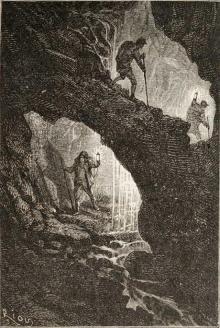 Voyage au centre de la terre. English
Voyage au centre de la terre. English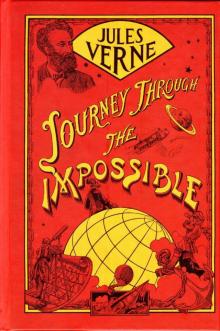 Journey Through the Impossible
Journey Through the Impossible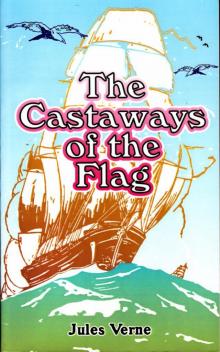 The Castaways of the Flag
The Castaways of the Flag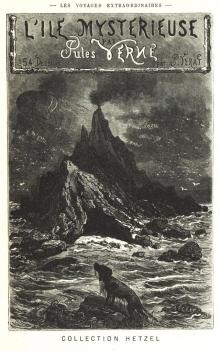 L'île mystérieuse. English
L'île mystérieuse. English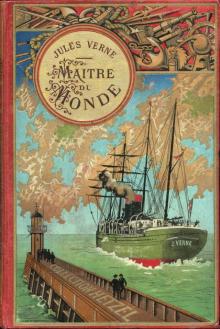 Maître du monde. English
Maître du monde. English Around the World in Eighty Days
Around the World in Eighty Days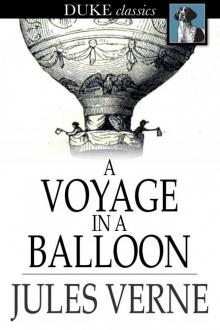 A Voyage in a Balloon
A Voyage in a Balloon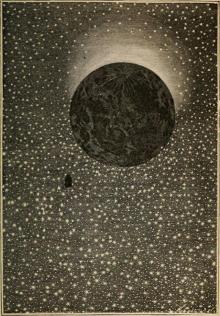 From the Earth to the Moon, Direct in Ninety-Seven Hours and Twenty Minutes: and a Trip Round It
From the Earth to the Moon, Direct in Ninety-Seven Hours and Twenty Minutes: and a Trip Round It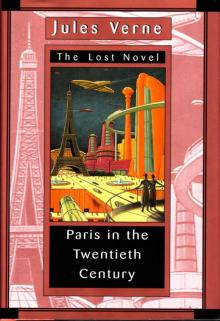 Paris in the Twentieth Century
Paris in the Twentieth Century City in the Sahara - Barsac Mission 02
City in the Sahara - Barsac Mission 02 The English at the North Pole
The English at the North Pole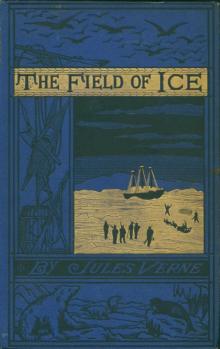 The Field of Ice
The Field of Ice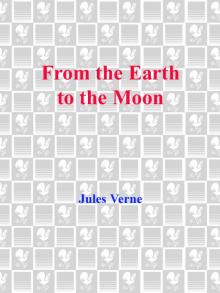 From the Earth to the Moon
From the Earth to the Moon Un capitaine de quinze ans. English
Un capitaine de quinze ans. English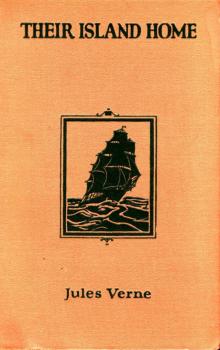 The Mysterious Island
The Mysterious Island Les indes-noirs. English
Les indes-noirs. English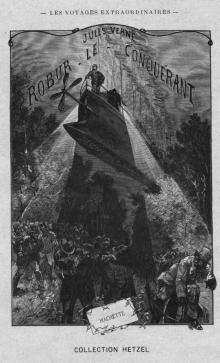 Robur-le-conquerant. English
Robur-le-conquerant. English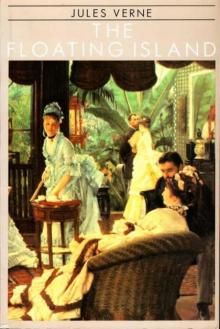 Propeller Island
Propeller Island Around the World in Eighty Days. Junior Deluxe Edition
Around the World in Eighty Days. Junior Deluxe Edition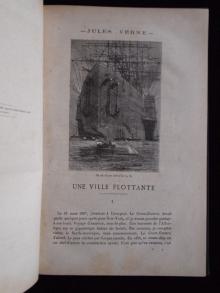 Les forceurs de blocus. English
Les forceurs de blocus. English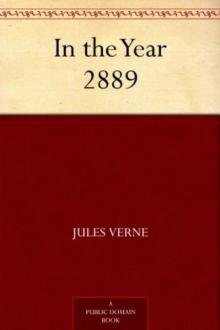 In the Year 2889
In the Year 2889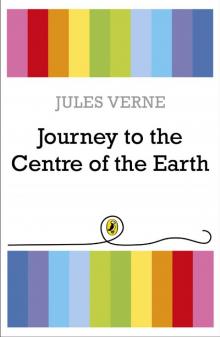 Journey to the Centre of the Earth
Journey to the Centre of the Earth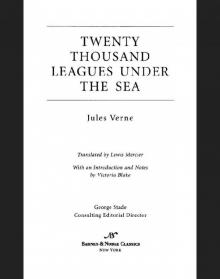 Twenty Thousand Leagues Under the Sea
Twenty Thousand Leagues Under the Sea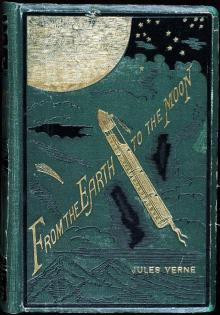 From the Earth to the Moon; and, Round the Moon
From the Earth to the Moon; and, Round the Moon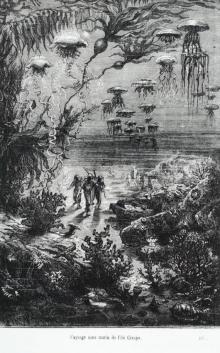 Vingt mille lieues sous les mers. English
Vingt mille lieues sous les mers. English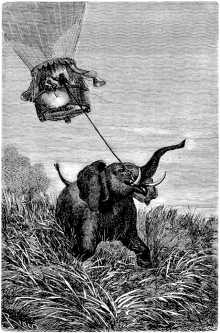 Cinq semaines en ballon. English
Cinq semaines en ballon. English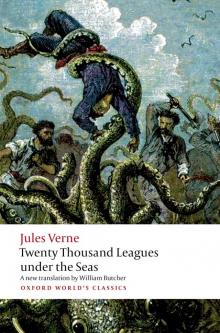 Twenty Thousand Leagues under the Seas
Twenty Thousand Leagues under the Seas Face au drapeau. English
Face au drapeau. English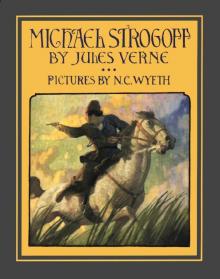 Michael Strogoff; Or, The Courier of the Czar
Michael Strogoff; Or, The Courier of the Czar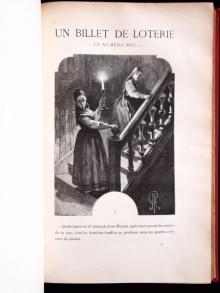 Un billet de loterie. English
Un billet de loterie. English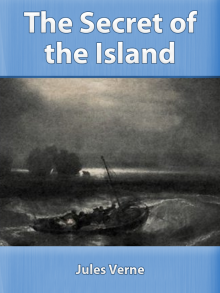 The Secret of the Island
The Secret of the Island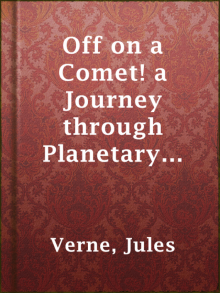 Off on a Comet! a Journey through Planetary Space
Off on a Comet! a Journey through Planetary Space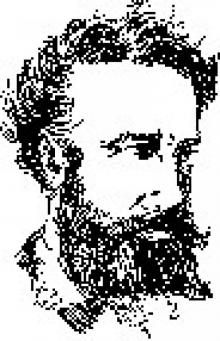 Into the Niger Bend: Barsac Mission, Part 1
Into the Niger Bend: Barsac Mission, Part 1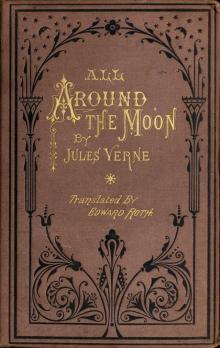 All Around the Moon
All Around the Moon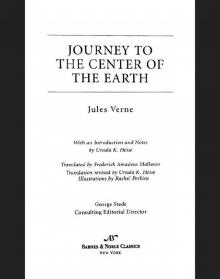 A Journey to the Center of the Earth - Jules Verne: Annotated
A Journey to the Center of the Earth - Jules Verne: Annotated 20000 Lieues sous les mers Part 2
20000 Lieues sous les mers Part 2 Robur-le-Conquerant
Robur-le-Conquerant Les Index Noires
Les Index Noires Michael Strogoff; or the Courier of the Czar
Michael Strogoff; or the Courier of the Czar 20000 Lieues sous les mers Part 1
20000 Lieues sous les mers Part 1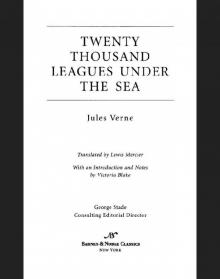 Twenty Thousand Leagues Under the Sea (Barnes & Noble Classics Series)
Twenty Thousand Leagues Under the Sea (Barnes & Noble Classics Series) Five Weeks In A Balloon
Five Weeks In A Balloon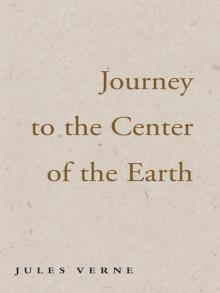 Journey to the Center of the Earth
Journey to the Center of the Earth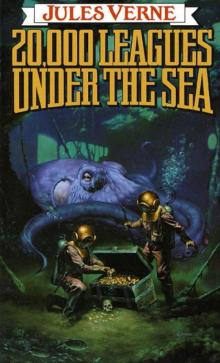 20,000 Leagues Under the Sea
20,000 Leagues Under the Sea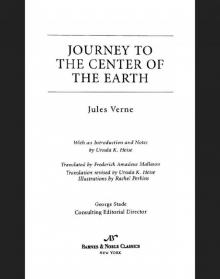 Journey to the Center of the Earth (Barnes & Noble Classics Series)
Journey to the Center of the Earth (Barnes & Noble Classics Series)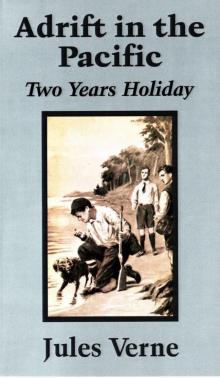 Adrift in the Pacific-Two Years Holiday
Adrift in the Pacific-Two Years Holiday The Collected Works of Jules Verne: 36 Novels and Short Stories (Unexpurgated Edition) (Halcyon Classics)
The Collected Works of Jules Verne: 36 Novels and Short Stories (Unexpurgated Edition) (Halcyon Classics)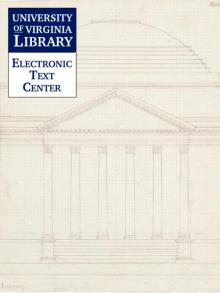 The Survivors of the Chancellor
The Survivors of the Chancellor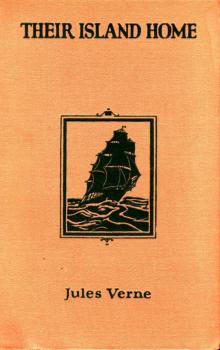 Their Island Home
Their Island Home Le Chateau des Carpathes
Le Chateau des Carpathes Les Cinq Cents Millions de la Begum
Les Cinq Cents Millions de la Begum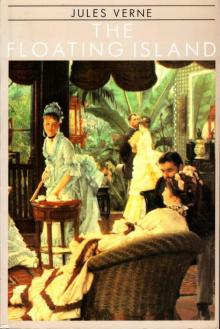 The Floating Island
The Floating Island Cinq Semaines En Ballon
Cinq Semaines En Ballon Autour de la Lune
Autour de la Lune